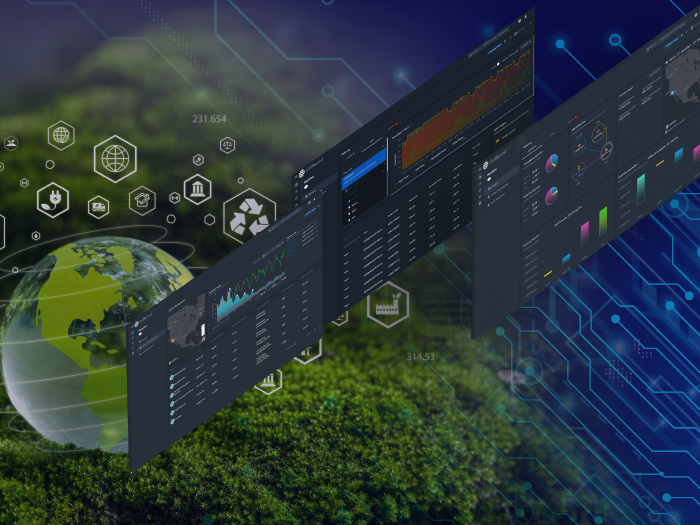News
better business decisions
Posted 1 year ago | 4 minute read

Exploring decarbonization technology options for C&I
In recent years, there has been a growing emphasis on decarbonization across industries worldwide. Commercial and industrial (C&I) businesses in the USA are increasingly recognizing the importance of transitioning to cleaner and more sustainable energy solutions to reduce their costs and carbon footprint.
With a plethora of decarbonization technology options available, it can be overwhelming for businesses to determine the most suitable strategies for their operations. Here, we’ll explore various decarbonization technologies and how they can be optimized to help businesses reduce costs, gain revenues and cut emissions.
Solar photovoltaic (PV)
Solar PV systems have emerged as one of the most popular decarbonization options for C&I businesses. By harnessing the sunlight available across different regions of the USA, businesses can generate clean and renewable electricity to power their operations.
Solar PV systems not only reduce carbon emissions but also offer long-term cost savings through reduced reliance on traditional grid electricity. Additionally, various incentives and tax credits available at the federal and state levels make solar investments even more attractive for C&I businesses.
Energy storage
Energy storage solutions, such as battery storage, play a crucial role in complementing renewable energy sources like solar PV.
These systems enable C&I businesses to store excess energy generated during peak sunlight hours for use during periods of high demand or when solar generation is limited. By optimizing energy usage and reducing reliance on grid electricity during peak times, energy storage contributes to both decarbonization efforts and cost savings for businesses.
Furthermore, advancements in battery technology have led to increased efficiency and scalability, making energy storage an increasingly viable option for C&I businesses.
Energy Management Systems (EMS)
EMS solutions offer sophisticated tools and software platforms that enable C&I businesses to optimize energy usage, monitor consumption patterns, and identify opportunities for efficiency improvements.
By implementing EMS, businesses can gain actionable insights into their energy usage, prioritize energy-saving initiatives, and track progress towards decarbonization goals. EMS also facilitates demand response strategies, allowing businesses to adjust their energy consumption in response to grid conditions or price signals.
Overall, EMS solutions empower C&I businesses to make informed decisions that drive both sustainability and financial benefits.
Combined heat and power (CHP)
CHP systems, also known as cogeneration, simultaneously generate electricity and useful heat from a single fuel source, typically natural gas.
By utilizing waste heat that would otherwise be unused in conventional power generation, CHP systems offer significantly higher energy efficiency compared to traditional grid electricity. This not only reduces carbon emissions but also provides cost savings for C&I businesses through lower energy bills and increased energy resilience.
Additionally, CHP systems can serve as a reliable backup power source during grid outages, enhancing the overall reliability of business operations.
Electric vehicles (EVs)
As the transition towards electric transportation accelerates, investing in EV charging infrastructure can significantly contribute to decarbonization efforts for C&I businesses.
By installing EV charging stations onsite, businesses not only support the adoption of electric vehicles among employees and customers but also reduce emissions associated with traditional fuel-powered vehicles.
Furthermore, integrating EV charging infrastructure with renewable energy sources and smart grid technologies can further enhance the sustainability and efficiency of C&I operations.
Conclusion
When it comes to reaching net zero there are a variety of paths that businesses can take. But each comes with its own challenges and impacts on both operations and budgets.
Decarbonization presents a significant opportunity for C&I businesses in the USA to transition towards cleaner and more sustainable energy solutions.
By leveraging a combination of technologies such as solar PV systems, energy storage solutions, EMS, CHP systems, EV technologies, businesses can not only reduce their carbon footprint but also achieve long-term cost savings and enhance their competitiveness in a rapidly evolving market landscape. As the demand for decarbonization continues to grow, embracing these technologies will be essential for C&I businesses to thrive in a low-carbon economy.
GridBeyond provides a cutting-edge suite of products and services, designed to transform the way you purchase, use and manage your energy. GridBeyond has developed a unique AI-powered platform that is accelerating the transition to a net-zero energy sector.
Our platform, Point, integrates with and optimises energy demand and generation assets of all shapes and sizes, from refrigeration and arc furnaces to batteries and solar PV, supporting our customers to make more strategic decisions about the way energy is used, stored and managed – helping your business and the wider energy sector reach net zero.

Net Zero Starter
GridBeyond provides a cutting-edge suite of products and services, designed to transform the way you purchase, use and manage your energy.
Learn more




